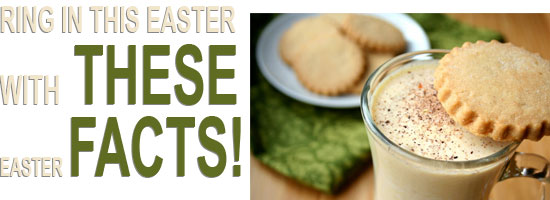1. The meaning behind the word Easter?
A lot of controversy surrounds the origin of the word Easter. According to several sources it originated with a goddess of the Anglo-Saxons named Eostre (also Estre, Estara, Eastre, Ostara, and similar spellings in various sources). It is believed that she is the goddess of the dawn and was worshipped in the spring by pagans in Northern Europe and the British Isles. In The Two Babylons, Alexander Hislop claimed Eostre is actually a name derived from the Babylonian goddess Astarte. In other sources some have suggested Easter finds its root in the German word for resurrection—auferstehung.
Christians in some circles have opted to move away from the word Easter due to its connection with a pagan origin and now refer to Easter as Resurrection Day.
It must not be forgotten that the meanings of words change over time. This can be demonstrated by a multitude of examples. However, even if the name we now use to refer to Christ’s resurrection was connected to a goddess some 1,400 years ago, it does not bear that connection today.
2. How did the tradition of Easter Eggs begin?
In Medieval Europe, eggs were forbidden during Lent. Eggs laid during that time were often boiled or otherwise preserved. Eggs were thus a mainstay of Easter meals, and a prized Easter gift for children and servants.
The tradition of painting hard-boiled eggs during springtime pre-dates Christianity. In many cultures around the world, the egg is a symbol of new life, fertility and rebirth.
For Christians, the Easter egg is symbolic of the resurrection of Jesus Christ.
Painting Easter eggs is an especially beloved tradition in the Orthodox and Eastern Catholic churches where the eggs are dyed red to represent the blood of Jesus Christ that was shed on the cross.
Easter egg hunts and egg rolling are two popular egg-related traditions. An egg hunt involves hiding eggs outside for children to run around and find on Easter morning. Eggs are rolled as a symbolic re-enactment of the rolling away of the stone from Christ’s tomb.
3. What does the Easter bunny have to do with
Easter?
Easter bunny also called the Easter Rabbit or Easter Hare originally played the role of a judge, evaluating whether children were good or disobedient in behaviour. Legend has it that the Easter bunny would bring candy and toys to the homes of children similar to that of Santa Claus. The goddess’ Easter earthly symbol was the rabbit, which was also known as a symbol of fertility. Since rabbits and hares give birth to large litters in the early spring, it’s understandable that the rabbit is the symbol of fertility.
To continue reading, purchase Vol.8 #5, 2016 Issue.

